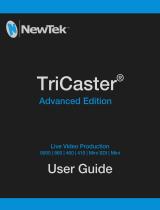
1
Using BOSS TONE STUDIO for GT-1B
This document explains basic operation of BOSS TONE STUDIO for GT-1B
(subsequently referred to as “TONE STUDIO”).
Getting Ready to Use TONE STUDIO
Important terms in TONE STUDIO
Library
This is a storage area inside TONE STUDIO.
Patches (livesets) that you download from BOSS TONE
CENTRAL (p. 13) and patches that you back up from the GT-1B
are saved in the library.
Liveset
A liveset is a group of multiple patches.
Patches that you download from BOSS TONE CENTRAL and
patches that you back up from TONE STUDIO are grouped as a
liveset and saved in the library inside TONE STUDIO.
You can also collect your favorite patches to create an original
liveset.
Installing the USB Driver
Before you use TONE STUDIO, the appropriate USB driver for the
product you’re using must be installed on your computer.
1. From the product support page, download the GT-1B
Driver.
To obtain the latest USB driver, access the following URL, and
download and install the appropriate driver for the product you’re
using.
http://www.boss.info/support/
2. Double-click the downloaded GT-1B Driver.
Installation begins.
Proceed with the installation as directed by the installation screens.
When the screen indicates “Installation has been completed.” click
the [Close] button.
The GT-1B Driver has been installed on your computer.
Installing TONE STUDIO
MEMO
Before you install TONE STUDIO, the USB driver must be installed
in your computer as described in “Installing the USB Driver” (p. 1).
Windows users
1. Download “BOSS TONE STUDIO for GT-1B” from the
product support page.
2. Double-click the downloaded le to decompress it.
3. Inside the folder created by decompressing the le,
double-click “BOSS TONE STUDIO for GT-1B. exe.”
Installation begins.
Proceed with installation as directed by the installation screens.
When the screen indicates “Installation has been completed.” click
the [Close] button.
Mac OS users
1. Download “BOSS TONE STUDIO for GT-1B” from the
product support page.
2. Double-click the downloaded le to decompress it.
3. Double-click the decompressed le.
A “BOSS TONE STUDIO for GT-1B” icon and “Applications folder” icon
appear.
4. Drag and drop the “BOSS TONE STUDIO for GT-1B” icon
onto the “Applications folder” icon.
BOSS TONE STUDIO for GT-1B is added to the applications.
Close the folder that you opened in step 3.
Copyright © 2017 ROLAND CORPORATION
01

















